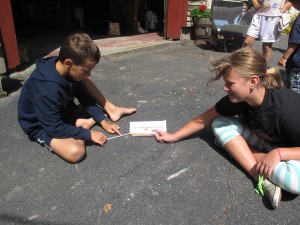Active Students, Passive Solar

Originally appears in the Winter 2013-2014 issue
Once upon a time, in a small country at the edge of the world, a couple bought a run-down house and renovated it into an eco-home using passive solar design. They opened up their home and shared their passion with the local community by holding workshops, welcoming school visits, and giving presentations. They also started a blog chronicling their everyday trials and triumphs called Eco-Thrifty Renovation. Word of the project traveled far and wide, up the Whanganui River and out across the Parapara Range to a number of rural schools in New Zealand that formed a cooperative network called a “cluster.” Teachers from three schools in the cluster decided they wanted the theme of their final term to be sustainable energy use. They contacted the couple and arranged a hui – Maori for gathering or assembly – to talk about working together.
At the hui, the teachers decided together to take a crosscurricular approach, integrating science, mathematics, English and the arts. The isolated locations of the schools across the rugged New Zealand countryside offered both challenges and opportunities. The couple would not be able to visit the schools during the term. However, they could communicate online as part of an innovative unit plan that could be shared not only across the Parapara, but also across the world. Additionally, the rural schools had enrollments of 5 to 25 students, so mixed-age classrooms were the norm. Therefore, the lessons would need to be adaptable for different ages and abilities. The couple returned home and developed a series of multi-disciplinary lessons on energy that became The Little House That Could (TLHTC).
This content is restricted to subscribers only.
If you are not yet a subscriber, please consider taking out a subscription here.
If you are an existing subscriber, kindly log in or contact us at info@greenteacher.com for more information.





